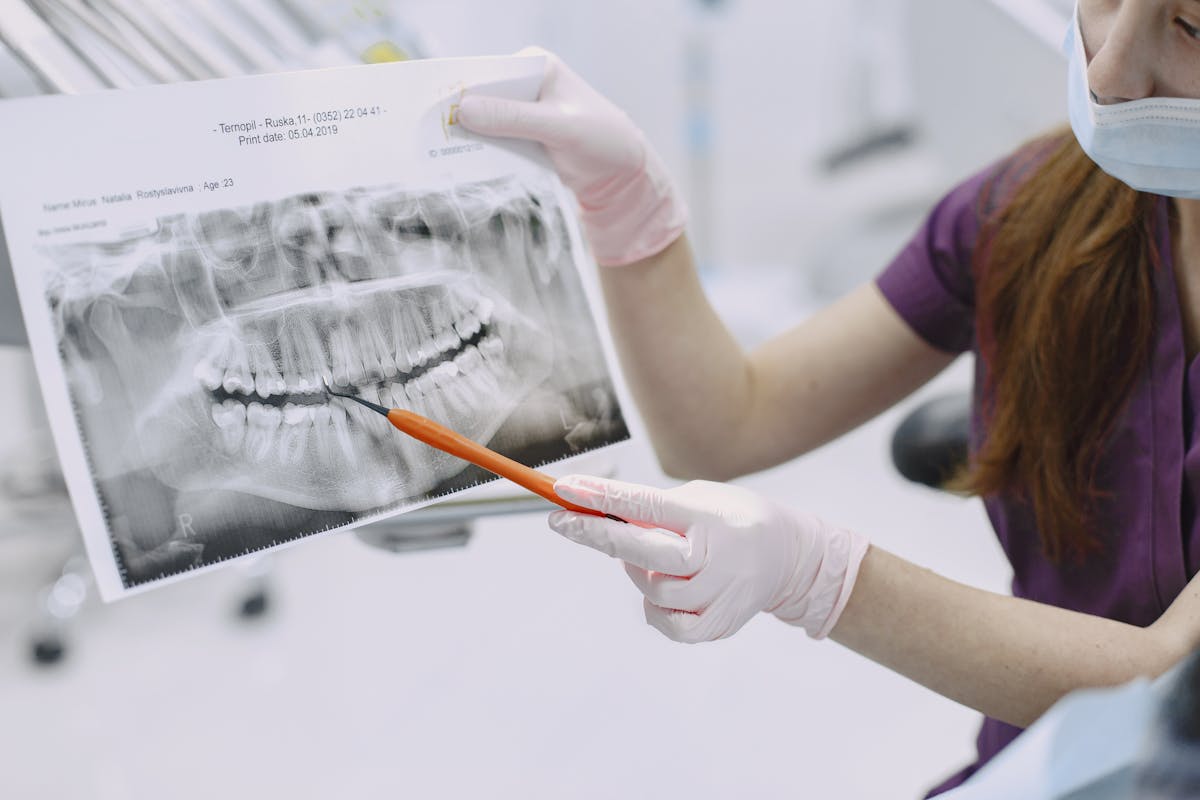The Cost of Dental Injuries in Legal Settlements: What You Need to Know

Maneuvering the complex landscape of legal settlements involving dental injuries requires an extensive understanding of the intricacies involved. The financial implications can be significant, spanning immediate and future medical expenses, lost earnings, and compensation for pain and suffering. However, determining the exact compensation is influenced by several factors, including the severity of the injury and the emotional toll it takes on the victim. Grasping these elements can play a pivotal role in securing a fair settlement. But what are these factors and how do they collectively affect the outcome of a settlement? Let’s dissect this intricate subject further.
Understanding Dental Injury Cases
Although dental injuries may seem less severe than other forms of physical harm, they often result in substantial pain, discomfort, and financial burden. Beyond the physical implications, such injuries can lead to significant legal and monetary consequences. This highlights the essential importance of dental injury prevention in minimizing these associated costs. In the context of legal settlements, victims can receive compensation for the cost of dental care, lost wages, pain, and suffering. However, prevention remains the most cost-effective and humane strategy. Dental care awareness plays a vital role in reducing the incidence of such injuries. By understanding the potential consequences of negligence, individuals can prioritize their oral health, helping to prevent dental injuries and the resulting legal complexities.
Typical Causes of Dental Injuries
Understanding the various causes of dental injuries is essential for evaluating the legal implications and potential costs associated with these cases. Primarily, these injuries transpire from sports-related traumas, accidents such as slip-and-falls, and negligence within dental practices. Each of these causes presents its own unique circumstances and challenges, which necessitates further exploration to determine liability and calculate potential settlements.
Sports-Related Dental Traumas
Despite the numerous precautions taken, sports-related dental traumas remain a prevalent issue affecting many athletes worldwide. These injuries, often severe and sudden, can occur in any sports activity but are more common in contact sports such as hockey, football, and boxing. The impact from a flying puck, a hard tackle, or a powerful punch can lead to a range of dental traumas, from minor tooth fractures to complete tooth avulsion. The repercussions are not just physical pain and dental disfigurement, but also significant financial implications for treatments and potential legal settlements. As a result, it is essential that athletes, coaches, and sports organizations prioritize preventive measures such as wearing mouthguards and helmets to minimize the risk of dental trauma. The cost, both personally and financially, is simply too high to ignore.
Accidents and Slip-and-Falls
While sports-related incidents account for a considerable portion of dental injuries, another prevalent source often stems from accidents and slip-and-falls. These unfortunate incidents can occur anywhere, from public sidewalks to commercial establishments. The consequences of such events can be severe, leading to expensive dental treatments and potential legal settlements. Incorporating slip and fall prevention strategies is thus essential for property owners to mitigate accident liability. Such preventive measures can include regular maintenance of walking surfaces, proper lighting, and clear signage. It is important to understand that the cost of these preventive measures is considerably less than the potential financial burden of a legal settlement following a dental injury.
Negligence in Dental Practice
In the domain of dental practice, negligence often stands as a significant contributor to dental injuries. Such negligence, termed dental malpractice, can manifest in various forms, including failure to diagnose or treat appropriately, improper use of dental equipment, or even ignoring a patient’s medical history. These oversights can lead to severe, long-lasting harm and infringe on patient rights. Often, patients are unaware of these rights, resulting in underreported instances of negligence. Hence, it becomes vital to educate patients, emphasizing the importance of maintaining a vigilant stance towards their dental care. By doing so, we can guarantee a decrease in negligent dental practices and subsequent injuries, ultimately reducing the costs associated with legal settlements.
Legal Aspects of Dental Injury Claims
The legal intricacies surrounding dental injury claims are multifaceted, requiring a nuanced understanding of the litigation process. Paramount to this discussion is the methodology for determining damages in these claims, a process that hinges on a variety of factors. This discourse will navigate these complex dynamics, providing an in-depth analysis of how dental injury lawsuits are structured and the critical elements that influence the determination of damages.
Understanding Dental Injury Lawsuits
Steering through the intricate domain of dental injury lawsuits requires a deep understanding of both legal and medical aspects. It is vital to comprehend that dental injuries, whether from an accident, malpractice, or negligence, are generally covered under dental insurance. However, ensuring proper compensation requires strong legal representation.
A dental injury lawsuit necessitates a thorough understanding of the interplay between dental insurance claims and legal proceedings. This involves maneuvering through complex insurance policies and understanding the legal rights of the injured party. It is imperative to have a professional who can adeptly handle these intertwining spheres, ensuring that victims get the justice they deserve. As a result, securing expert legal representation is an important step in maneuvering through dental injury lawsuits.
Determining Damages in Claims
Evaluating the financial implications of dental injury claims is a critical part of the legal process. An accurate damages breakdown is essential to guarantee fair compensation for the claimant. This involves a thorough calculation of medical costs, including immediate and future treatment, any loss of earnings due to the injury, and pain and suffering endured.
Compensation factors are multifaceted, encompassing both tangible and intangible elements. Tangible elements, like lost wages and medical bills, are relatively straightforward to quantify. However, intangible damages, such as emotional distress and loss of enjoyment of life, require expert legal assessment. In all cases, the objective is to fully compensate for the injury sustained, reinstating the claimant to their pre-injury status, as far as monetary payment allows.
The Role of Dental Records in Settlements
How essential are dental records in legal settlements involving dental injuries? The answer is, absolutely crucial. The dental documentation importance cannot be understated in such legal proceedings. These records serve as tangible proof of the injury’s nature, extent, and the treatments rendered, forming the basis of damage calculations. Accurate, detailed, and thorough record keeping practices in dentistry are instrumental in substantiating claims, thereby influencing the settlement outcome considerably. A well-documented dental record can undeniably strengthen a victim’s case, demonstrating the direct link between the incident and the dental harm suffered. Conversely, poorly kept records can undermine case credibility, potentially leading to unfavorable settlement outcomes. Consequently, maintaining meticulous dental records is not just an ethical obligation for dentists, but a legal necessity too.

Estimating the Cost of Dental Treatments
Maneuvering the landscape of dental treatment costs is a complex task, given the wide range of procedures, varying degrees of damage, and the differing rates across dental practices. The cost of dental treatments can range from minor expenses for preventive care to significant amounts for restorative procedures. In cases involving extensive dental damage, seeking specialized prosthodontic care in Seattle can be crucial for ensuring a full recovery, especially for those requiring custom dentures, crowns, or implants. While dental insurance often mitigates some of these costs, coverage limits can lead to out-of-pocket expenses. Legal professionals must carefully consider these variables when estimating settlement amounts. It’s vital to evaluate the treatment costs accurately to guarantee fair compensation for the injured party. Underestimation can lead to inadequate compensation, while overestimation may lead to unnecessary legal disputes. In-depth knowledge of dental insurance policies and treatment costs is thus imperative.
Impact of Dental Injuries on Quality of Life
The impact of dental injuries extends far beyond financial evaluations, greatly affecting an individual’s quality of life. The physical consequences are immediately evident; however, the emotional distress and long term effects are often overlooked. Dental injuries can lead to difficulties in speaking and eating, potentially causing nutritional deficiencies. Additionally, changes in facial appearance can lead to decreased self-esteem and social isolation. The emotional toll can be substantial, leading to anxiety, depression, and other mental health disorders. As a result, it is essential to reflect on these long-term effects when discussing the cost of dental injuries. The broad impact on a person’s life must be a significant factor in legal settlements, ensuring fair compensation for the victim’s overall suffering.
Pain and Suffering: Monetary Compensation
While it is challenging to quantify the pain and suffering endured by victims of dental injuries, monetary compensation is often awarded in legal settlements to acknowledge this non-economic damage. Pain compensation and suffering claims aren’t just about reimbursements for medical expenses, but also for the physical discomfort, distress, and loss of enjoyment of life. The goal is to restore the victim’s lifestyle, as closely as possible, to what it was before the injury. The amount varies greatly depending on the severity of the injuries, the impact on the victim’s life, and the jurisdiction’s specific laws. As subjective as this may seem, qualified legal professionals can guide victims to accurately assess and support their claims for pain and suffering.
Successful Dental Injury Settlement Examples
Examining various successful dental injury settlements can provide a clearer understanding of how courts determine compensation amounts. The settlement outcomes largely depend on the severity of the injury, the impact on the victim’s quality of life, and the negligence involved. One case study involves a plaintiff who received $350,000 after suffering a severe dental injury due to a car accident. In another case, a victim won $1.5 million in a settlement after a failed dental procedure led to permanent damage. These examples highlight the potential for substantial compensation in dental injury cases. However, every case is unique, and these examples should serve as a guide rather than a guarantee of a specific outcome.
Tips for Navigating Your Legal Journey
Steering through the complex legal journey following a dental injury can indeed be intimidating. The value of legal representation cannot be overstated. An experienced personal injury lawyer will provide strategic guidance, ensuring your rights are protected while pursuing the compensation you deserve.
Understanding compensation timelines is equally essential. Cases vary, some may be resolved in weeks, others might take years. Patience and persistence are key in these scenarios. It’s also important to gather all relevant medical records and evidence to substantiate your claim. Thorough documentation can greatly strengthen your case. Finally, maintain open communication with your legal representative, promptly addressing any queries and concerns. Remember, maneuvering this journey successfully requires meticulous preparation, strategic patience, and professional guidance.
Frequently Asked Questions
How Long Does a Dental Injury Lawsuit Typically Take?
The timeline for a dental injury lawsuit varies greatly, influenced by the complexity of legal procedures involved. It could range from a few months to several years, depending on the specifics of the case.
Can I Claim for Emotional Distress in a Dental Injury Case?
Yes, emotional distress can be claimed in a dental injury case. However, it necessitates substantial legal evidence to demonstrate the emotional damages’ direct correlation to the dental injury experienced by the plaintiff.
What Types of Insurance Cover Dental Injury Lawsuits?
Dental insurance policies may cover dental injury lawsuits depending on the plan. Additionally, liability coverage in homeowners, renters, and auto insurance can potentially provide compensation for dental injuries resulting from accidents or negligence.
How Are Dental Injury Attorneys Typically Compensated?
Dental injury attorneys are usually compensated through contingency fee structures, meaning they receive a percentage of the settlement or verdict. Initial case evaluations are typically offered free to assess the potential success of the case.
Can a Dental Injury Claim Affect My Employment?
A dental injury claim should not affect your employment, given existing employment rights. However, specifics may vary based on workplace policies. Always consult with a legal professional to fully understand your rights and potential impacts.
